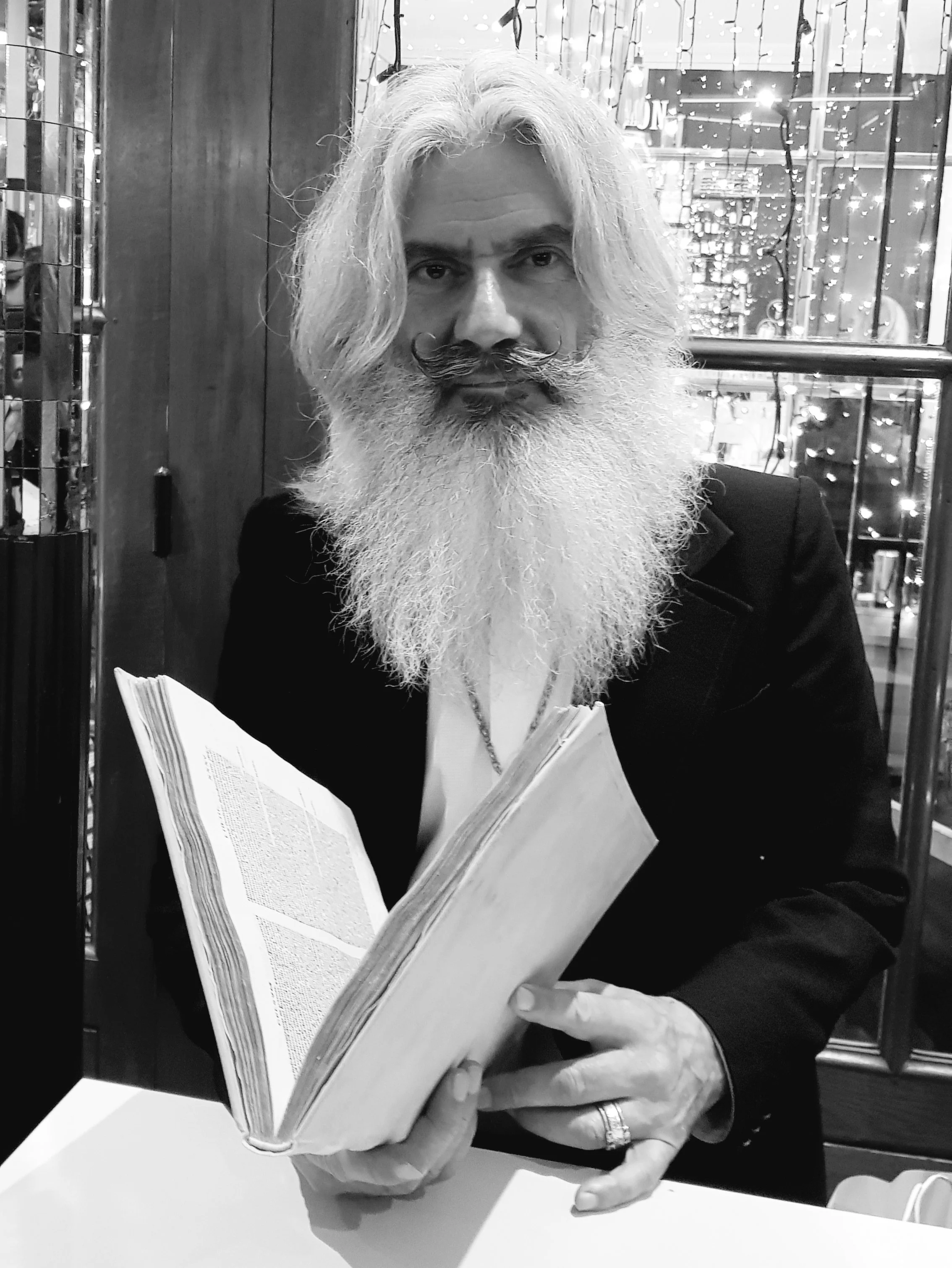Christophe Poncet
At the crossroads between occult and human sciences, philosophy, iconology and the theurgic art of talismans, Christophe Poncet’s research on the tarot de Marseille’s arcana sets the theatre of an initiatory quest.
It all started as a fantasy tale: on his 19th birthday his girlfriend offered him a wicked pack of cards. A tarot de Marseille deck.
Intrigued by the dynamic density of the symbols sedimented in the images, as an accretion of geological strata, he discovered a strange and foreign language that draws its power from its combinatory plasticity. He then realized that to understand what the cards had to say, one would need to find out from what they were made.
Thus began the allegorical adventure: just like the Fool, the pilgrim who knows not where he is heading to, Poncet gets off the beaten track of the abundant lore on the mythical origins of the tarot and starts afresh from a rigorous analysis of the costumes represented in the card’s figures. This leads him to a precise dating and localization of the tarot de Marseille’s origins: Florence circa 1470, the cradle of the Italian Renaissance.
In parallel with this iconographical inquiry, as he was reading Plato’s dialogues, Poncet realized that several arcana stage famous Platonic myths, like the chariot of the soul or the allegory of the cave: the figures he had been studying were suddenly revealing their hidden density.
Beyond art history and its layer of appropriations and influences, came up the inner machinery of a philosophical theatre of memory in which images do not just represent but act as vectors of an occult thought process.
At the intersection between Florence and Platonic mythology, an unexpected protagonist showed up: Marsilio Ficino, philosopher, mage, and astrologist, the first translator of Plato’s complete works and of the Corpus Hermeticum, and the savant who probably lent his first name to the tarot de Marseille.
Irrigating western thought with the philosophical mysteries of Antiquity, to which his commentaries add a twist of his own, Ficino’s works fueled an unprecedented speculative and artistic enthusiasm, which strongly contributed to the transmutation of the scholastic thought of the Middle Ages into a Renaissance of spirit and knowledge.
Just like its subject, Poncet’s research deploys a multi-layered ars combinatoria: at first, with iconological precision, it investigates the original texts that inspired the artists’ images; then the philosophical vision, anachronic in the way it reappears and turns back to life in the traditional world of art representations, awakens the iconic and magical dimension of performative images. This dimension, today as in the Renaissance, retains intact the charm of a universal and visionary use of the cards.
Poncet’s research has led him to produce a documentary film broadcasted internationally, The Mysteries of the Tarot of Marseille, to publish a book on Sandro Botticelli’s Primavera and the Lovers card of the tarot de Marseille, Le Choix de Laurent, translated into Italian and Japanese, and many articles in academic journals on the tarot, on Botticelli and on Ficino.

